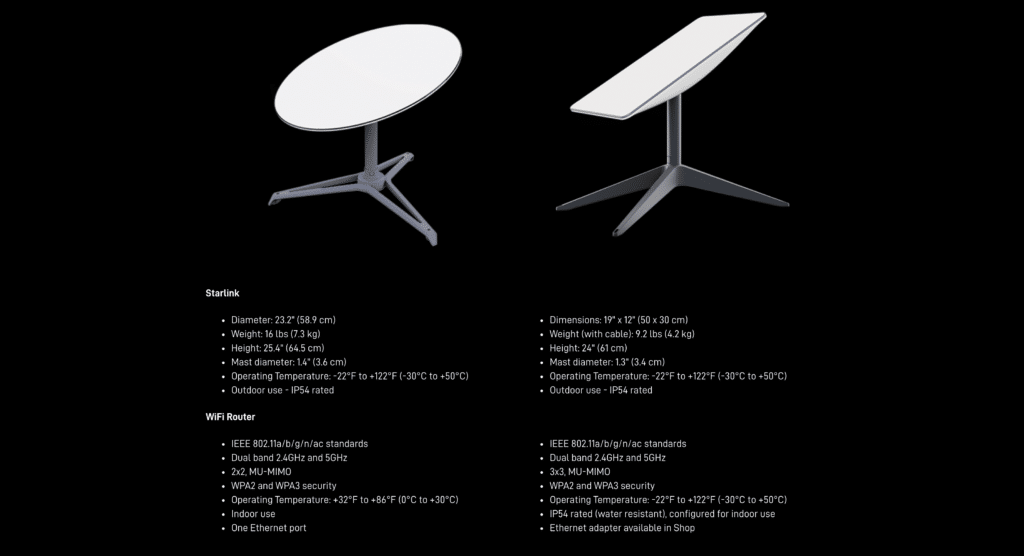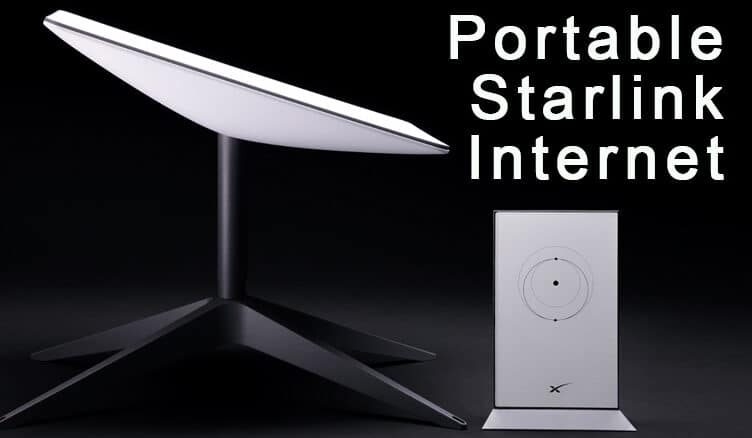Updated 6/10/22:
Starlink now offers two services:
Starlink Home service with portability – equipment is tied to your service address (home) but for an additional cost (additional hardware + additional monthly cost) you can also access Starlink internet in other locations. Keep in mind this (supposedly) requires you purchase additional equipment.
Starlink RV service – requires same equipment purchase as above but does not require it to be used at a specific service location, meaning it can be used anywhere service is available (think overlanding, different location all the time).
Starlink RV Pros and Cons:
Starlinks RV Pros: There are several advantages…
- High speed internet anywhere Starlink service is provided, including off grid locations
- Pay month-to-month without fees for putting service on pause
- There are currently no waitlists or delays in getting signed up for service or in receiving equipment.
- The cost is the same as Home + Portability service – $130/month.
Starlink RV Cons: There are some drawbacks though…
- Starlink RV service is given a lower priority and therefore may experience lower download and upload speeds versus home based speeds.
- Monthly service fees cannot be prorated. If you use the service for just one weekend you still must pay for the entire month.
Starlink brings internet to off-grid locations for camping and overlanding
Starlink is the highly anticipated satellite-based internet service bringing high speed internet to anyone – even overlanders off grid. It was originally released in beta for a small set of customers but has recently been opened to the mass market. More important for overlanders – Starlink is now portable (meaning it can be used in locations other than your “home address”).
Starlink is now portable for RVs and overlanding vehicles.
When Starlink was first released it was only provisioned to certain areas (to match up satellite coverage) and had to be used at a fixed address. This obviously wouldn’t work for overlanders roaming the woods and desserts in their offroad rigs. Fortunately, Starlink has announced that it’s service and equipment can now be used in locations other than your home address. We’re not sure why they don’t say it can be used anywhere – but we’ll roll with it for now. Portability comes with an added cost of $25 per month, added to the base cost of $110 per month (as of the writing of this article).
Starlink download and upload speeds:
Starlink connection speeds vary considerably based on location and the number of users in your area. According to published material users can expect “download speeds between 100 Mb/s and 200 Mb/s and latency as low as 20ms in most locations.” That’s plenty fast enough for video calls, online gaming, streaming, and other high data rate activities. Finally, usable internet is available for overlanding, camping and off-grid living applications. Imagine overlanding to your favorite camping spot in that far flung location and being able to work (including Zoom calls) and watch streaming shows!
Starlink required equipment:
Starlink includes several components that work in unison to bring you high speed internet in rural and off-grid locations. Overlanders should consider power consumption and necessary power generation to run this equipment in off-grid locations. The basic Starlink components include: Starlink weather-resistant* satellite dish, wifi router, cables and base.
- Power Consumption: the Starlink router and base require 100 watts while running. While not enormous – that’s enough draw to require a generator or battery setup (preferably recharged by solar panels).
- Mounting tripod: The mounting tripod is designed to be quick and easy to setup. The legs are adjustable and can be placed in any position on the vehicle roof/hood, ground or table. No word yet on a mobile-specific Starlink mount.
- Starlink dish: The original circular receiver dish has now been replaced by a rectangular dish that is smaller and lighter and therefore better suited to overlanders needing internet access. Once pointed at the sky the dish can begin downloading and uploading data to the Starlink satellite internet network.

*Starlink claims the satellite dish can “withstand extreme cold and heat, hail, sleet, heavy rain, and gale force winds – and it can even melt snow.”
Roughing it no longer requires being completely disconnected from civilization – unless you want it that way of course. Given the increase in people working remotely – now “remote” can include the off-grid cabins, the far flung canyon in Moab, the wooded glen in the Alpine Loop in Colorado, or wherever your overlanding adventures take you!
Click here for more overlanding gear reviews.


